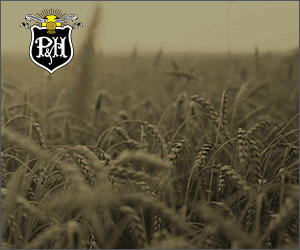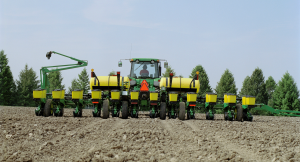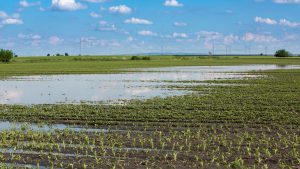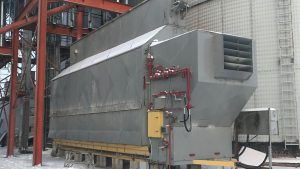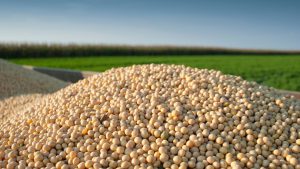Field observations
SPRING 2020 UPDATES
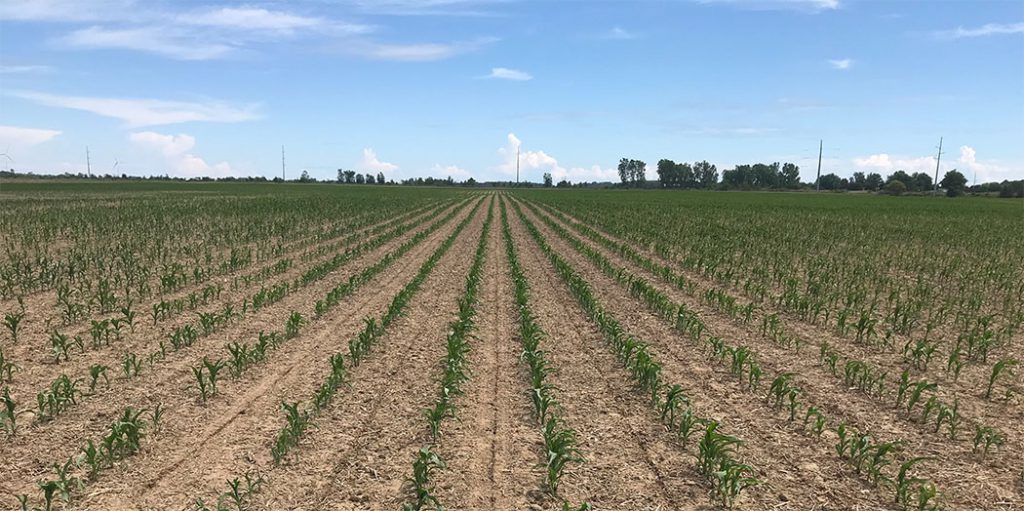
June 19, 2020
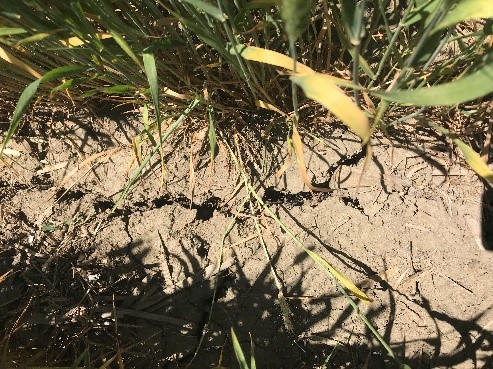
Dry weather this week is forcing the spring planted crops to search for water. Roots are going deeper and in restricted root development areas, evapotranspiration is higher than the moisture uptake of the plant during the heat of the day. Plant stress is evident. The old saying, ‘what doesn’t kill you makes you stronger’, may be accurate for root growth at this earlier plant development stage, but unfortunately with crops, prolonged exposure to drought will have detrimental effects when the crop begins the reproductive stage in the upcoming weeks. Timely rains will be needed to make this crop perform.
Heat accumulation is lagging behind the eight-year average for southern and eastern Ontario, while the western part of northern Ontario is accumulating more heat than the eight year average. While 100 CHU may seem like a lot, it translates into three summer days. Most would agree that the wheat crop seems to be a few days behind the average growth stage for this time of year.
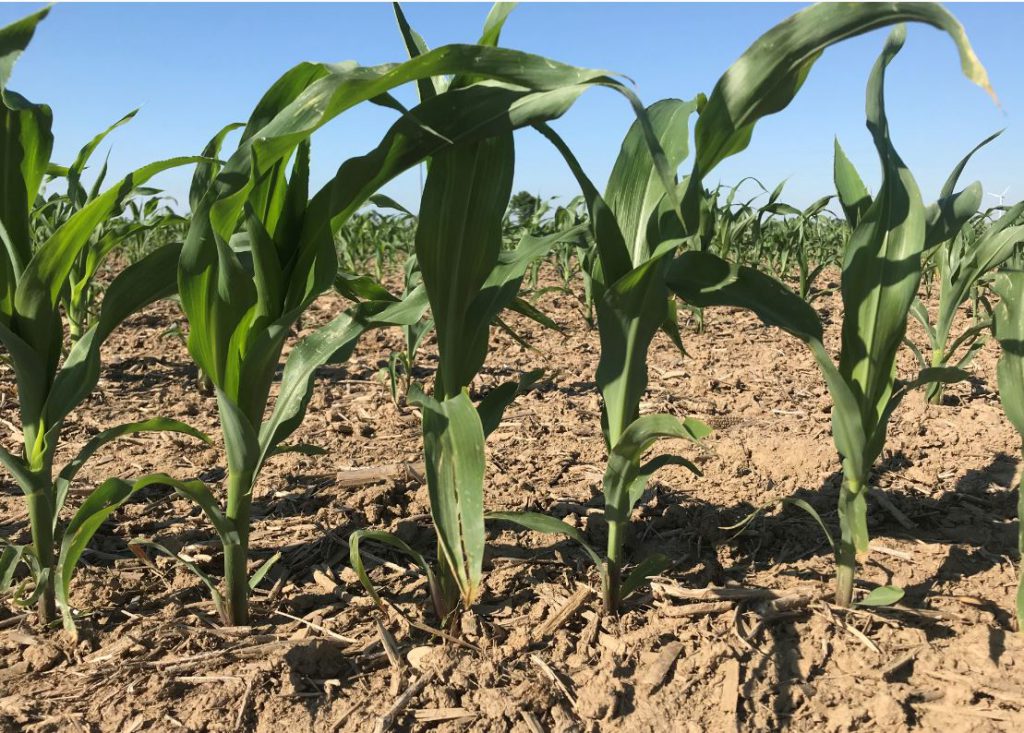
Corn
Crop development is occurring rapidly with the heat units accumulating quickly. Lots of corn between the V3 and V6 stage (7-8 leaf stage). V stage is the reference to the vegetative stage with the counting of collars on the corn stalk. From V6 to V10 the corn plants will be developing the ear and at this stage kernel numbers per row and rows per cob will be determined. Stress in the upcoming weeks from lack of nutrients or moisture will reduce grain potential through reduced kernel numbers.
Keep an eye on army worm populations locally as there may be potential move of the insect from neighboring fields. •
Soybeans
Soybean establishment is occurring with plant development in the unifoliate stage (late planted) to the early 2nd trifoliate stage (early planted fields). Fields that have not received a rainfall since planting and may have been seeded into dry soil due to shallow planting, remain un-germinated, waiting for a rain.
Wheat
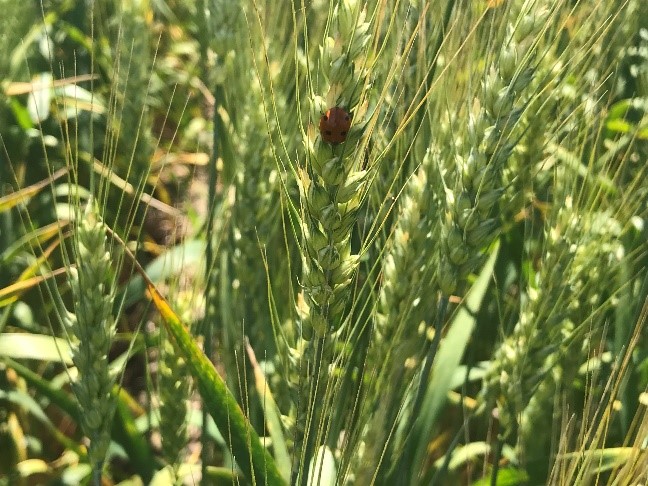
In the southwest of the province, kernel fill is occurring on the winter wheat crop. Prolonged dry weather will be limiting kernel fill resulting in smaller kernels as the water availability for the crop becomes limited. We may also experience kernel abortion and dead heads as the plant dies rather than matures. Flag leaves are already starting to senesce as the plant is moving nutrients and moisture from the leaves to the kernels to help finish kernel developments. Cracks are appearing in wheat fields as the moisture is being sucked out by the wheat cop.
Good news, dry weather prevents diseases from developing and spreading, so grain is expected to be clean of DON for the majority of the acres. On the not so positive side of dry weather, insects are rapidly increasing with reports of aphids, army worm and cereal leaf beetles. Lady bug populations have taken off and are feeding on aphids, but the army worm will need grower considerations to prevent large populations that may clip heads in wheat or migrate to other crops. Check Tracey Baute’s article in Field Crop News for more details. https://fieldcropnews.com/2020/06/true-armyworm-and-cereal-leaf-beetle-in-cereals/ .
June 12, 2020
Heavy winds rolled through southern Ontario on Wednesday night. Some damage occurred to buildings and trees, with some power line damage. Hope everyone has their power back and able to recover. The crop also sustained a bit of damage, as soil blasting and residue bombardment ripped leaves, but at this early stage the plants will grow out of it and recover.
Drier weather is sending roots down. Crops that have limited rooting ability due to compacted soils will be showing drought stress first. Some corn that is quickly growing in the heat has shown signs of drought through leaf rolling as more moisture is being evaporated than can be taken up by the plant. Cooler weather in the forecast should allow the water balance to even out.
Fields are greening up across the province. Hard to believe last year we were just starting into planting at this time and it took most of June to get the crop planted across the province.
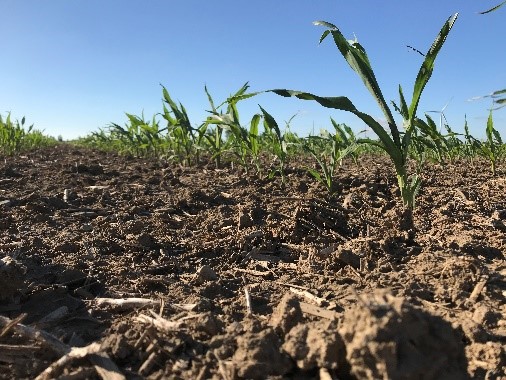
Corn
Corn is progressing this week to the V4 to V5 stage for the earlier planted corn. Side dress nitrogen applications have started and will continue to be a job on the farm over the next week. A new GrainTALK webinar by Grain Farmers of Ontario with guests Ben Rosser and Josh Nasielski called “Nitrogen Management on Corn” https://youtu.be/z0Lfm9zaoda is a great quick refresher on nitrogen considerations for spring side dress nitrogen management. There is a great discussion and interpretation on PSNT[RT1] testing. Check Field Crop News as the 2020 PSNT survey will be posted very soon. https://fieldcropnews.com/
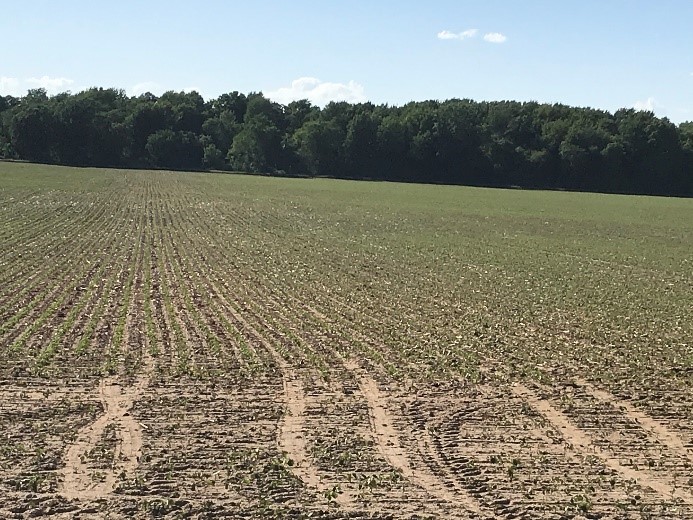
Soybeans
Majority of the soybeans planted in the later part of May only took six to seven days to emerge with the warmer soil conditions. Stand establishment on the quick emerging crop is very good. The earlier planted soybean crop that had cooler soils and low heat unit accumulation took some time to emerge and may have had crust and insect concerns to deal with. Weed control at this stage will be important to maximize yields.
Winter Wheat
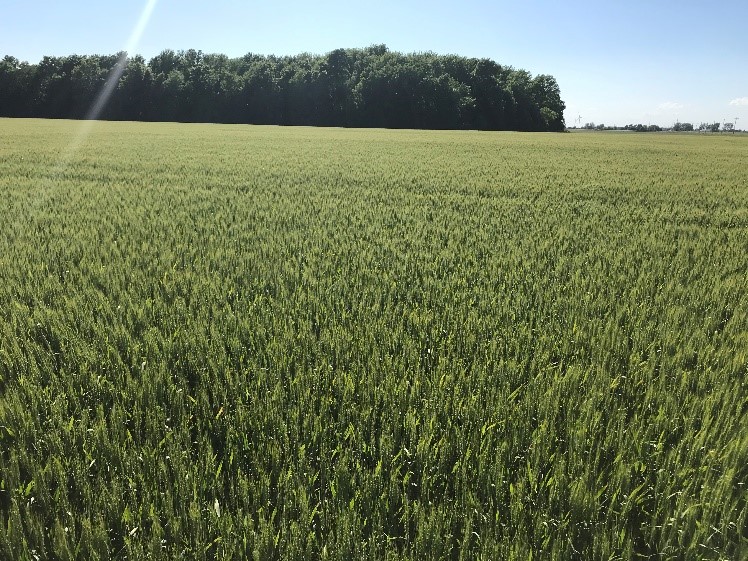
As the heads have emerged on the wheat crop and pollination has finished in the southwest and as pollination stage continues to the north and east across the province, the crop is looking very uniform with good potential. There is something about a wheat crop with the heads fully emerged that looks really good. The next big step will be the golden colour of maturity in about three to four weeks. I hope timely rains over the course of the next month will fill the kernels to their maximum potential. Dry weather at this time may limit grain fill and reduce kernel size.
June 5, 2020
Warmth and sunshine over the past week have helped to dry the land and allowed farmers to continue to plant. But it has also raised concern with some that a rain will be needed soon to help the crop in areas prone to drier conditions. A few lower nighttime temperatures have slowed the Crop Heat Unit (CHU) accumulation for a few days this week, but more above average nighttime temperatures have helped keep heat accumulation climbing. We are still 50 CHU behind the eight-year average, but it is better than the 100 or so heat unit decline we saw three weeks ago.
The crop is advancing quickly and will continue to advance over the next week as the forecast will bring an average of 25 CHU per day.
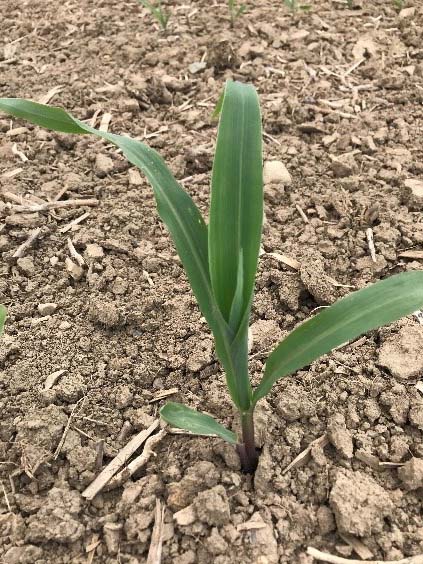
Corn
Corn has been jumping this week. Seems it’s only been emerged for eight days, but had been in the ground for 20 days, it was ready for a growth spurt. Continuous warm weather has driven crop growth.
Side dressing nitrogen and weed control are critical over the next two weeks. Keep the crop weed free until V6 (seven to eight leaves). Adjust nitrogen application for your field conditions. If your plant stand is lower than expected, adjustment to yield potential will need to be re-calibrated. Adjust sidedress nitrogen application based on field expectations. The N calculator at gocorn.net can assist you in your calculations.
Soybeans
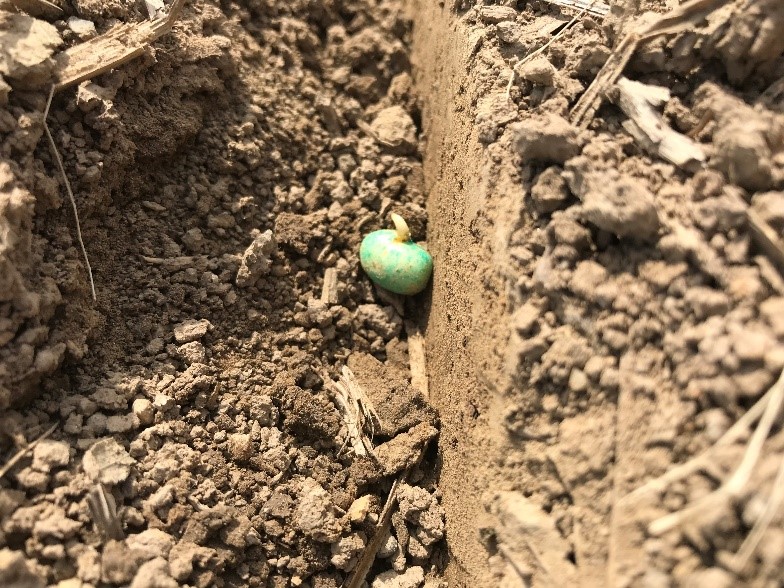
Many of the mid to later May planted soybean fields have been emerging over the last week. Reports have been great to fair for stand establishment.
Later planted soybeans are taking advantage of moist, warm soils and will be emerging quickly. At 50 CHU, soybeans are seen at the sprout stage. Within the week these fields will be emerged.
Weed control will be on many farmer’s minds, if relying on post emerge products make sure to review label recommendations and follow the proper requirements for spraying. Prevent off-target movement of dicamba based products and ensure crop safety by following label instructions. Here are some key points off the Xtendimax™ with VaporGrip™ Technology label.
- Apply when air temperatures is between 10° C and 25° C.
- Do not apply when there is a risk of severe fall in nighttime temperature after use.
- Do not spray when the temperature is expected to exceed 30° C.
- Avoid spraying under conditions of high humidity or fog.
- Do not spray when the temperature is expected to exceed 30° C.
- Apply when wind is 5 km/hr to 15 km/h.
- Do not apply during periods of dead calm or when weather conditions may cause drift from target areas to adjacent sensitive crops.
- Do not apply during a temperature inversion.
- Use nozzles that produce extremely coarse to ultra coarse spray
- Leave an adequate buffer zone between treatment area and sensitive plants.
- Boom height should not exceed 50 cm from target
- With low relative humidity applications, set equipment to produce larger droplets to compensate for evaporation. Droplet evaporation is most severe under hot and dry conditions.
- Thoroughly clean sprayer after use
- Refer to label for application rates and other recommendations
Wheat
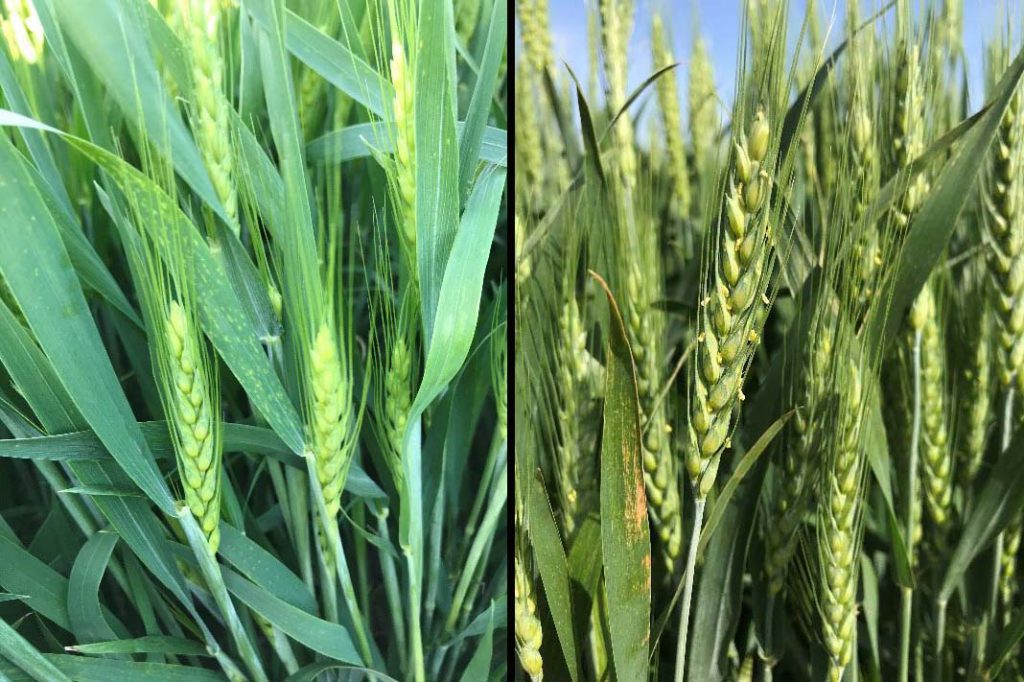
Warm day and night temperatures (ok, hot weather) is pushing the wheat crop right along. This week in southwestern Ontario, we received 80 CHUs in 3.5 days and took the crop from ¾ head emergence to 50% pollinated. What usually takes a week, only took half a week. Those farmers looking to spray the T3 fungicide application need to scout fields daily after heading, as a normal three-day application window has turned into a 1.5 day application window. Ideal T3 fungicide application is at 25% pollen break of the average head of the main plant. Note – for cooler areas, the window of application may be up to seven days, but it depends on the temperatures received during the heading/pollination period.
Click below for more information on:
optimizing fungicide use to control Fusarium and DON
May 29, 2020
“HEAT – now that felt good this week.” If crops could talk, that’s what they would be saying. Accumulation of Crop Heat Units (CHUs) this week has doubled what we have received since May 1. With the rapid increase in heat accumulation we have seen rapid plant growth.
With the dry warm weather this week, planting continued across the province with some areas wrapping up corn and soybean fields and starting to focus on specialty crops such as edible beans and tomatoes. In some areas where fields were wet and cold earlier this month, farmers were able to begin planting.
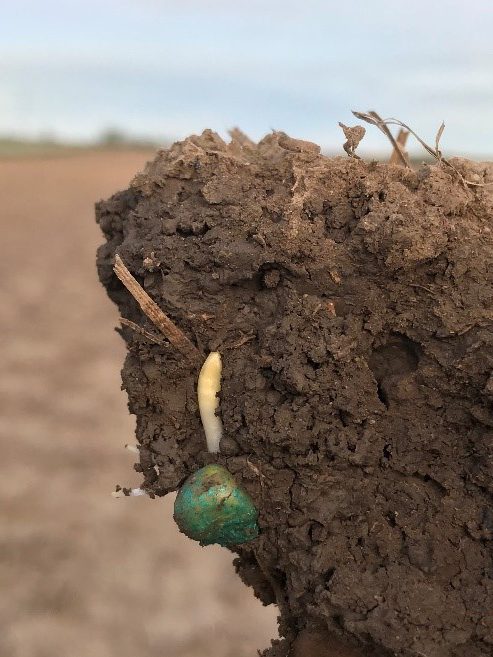
Corn
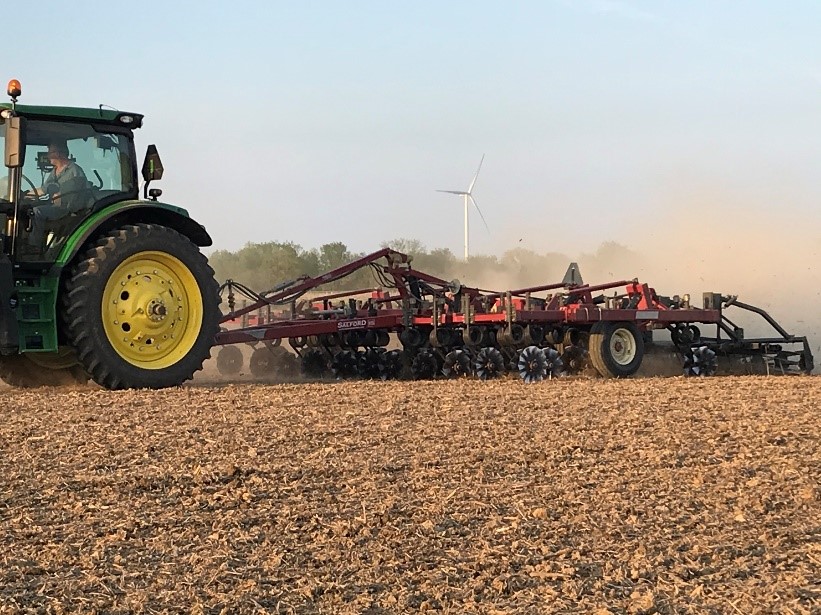
Corn has been emerging this week as CHU accumulations have surpassed 180 CHU for the earlier planted fields. Some fields are struggling to emerge, and it has taken up to 250 CHU before emergence occurred. Two to three inches of rain, two weeks ago, with cold soils created tight soil conditions that made it extremely hard for the coleoptile to freely emerge. Some fields have seen pre-emerge leafing as the plumule broke through the coleoptile in the soil preventing it from emerging; yellow tips of the coleoptile are the sign that the plumule is close to emerging. This normally happens above the ground when the plant senses day light.
Many farmers in southern Ontario were trying to break the crust to allow the seedling to emerge earlier this week. Rotary hoes, grain drills, planters, or RTS units were used in order to help crack the ground to release the seedling from the soil.
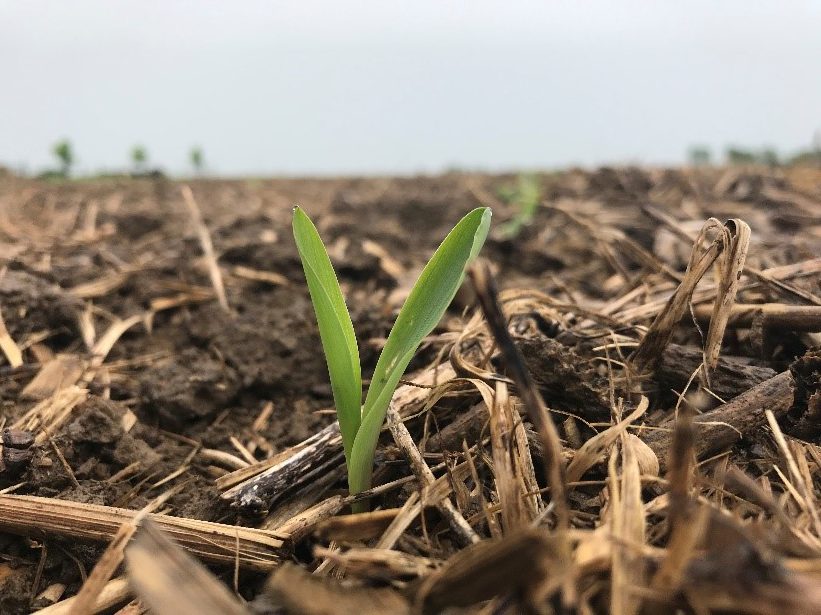
Plant stands will be uneven this year as the crop has emerged unevenly due to the cold stress earlier on. Population has been affected by the poor emergence and plant stands will need to be evaluated and counted. Low populations may need to be replanted. On-line calculators like the one found on www.gocorn.net (Replant decision Aid 1.8) can be used to help with the replant decision. Just change the values to suit your field situation and the tool will help calculate the profit or loss of replant.
Lower population anduneven emergence all take a bit out of the expected yield potential. Farmers will need to adjust their yield expectations and manage their crop based on the new yield estimates. Adjusting yield targets will lead to adjusted management practices to match new yield potential. Reduction of crop inputs such as side dress nitrogen and other crop inputs will change to match new expectations of lower yields. Decisions will need to be made field by field. New technology to sense plant stands and adjust nitrogen application by VRT (variable rate technology) would be ideal.
Soybeans
The planting of soybeans has continued this week with areas reporting 90% to 20% completed. Provincial average would be in the 50% range. Earlier planted soybeans are emerging. No concerns have been reported to date.
Winter Wheat
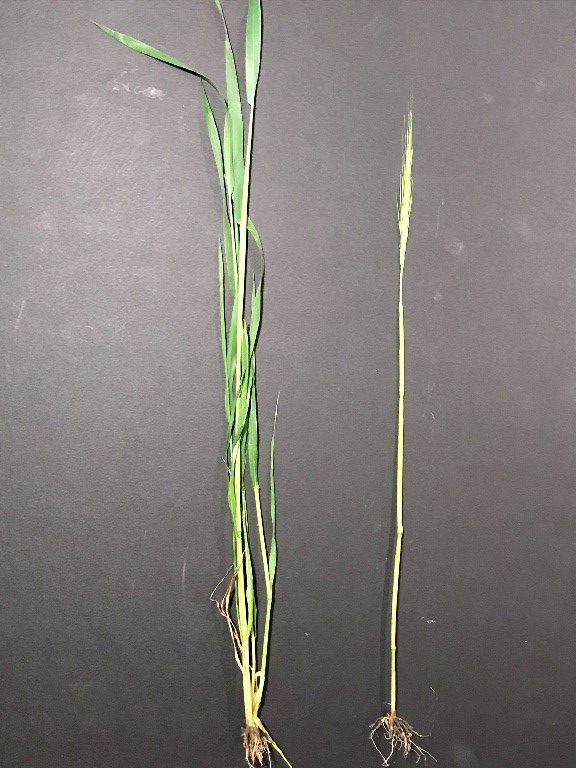
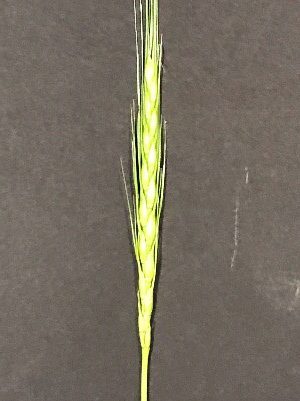
Heat has driven the wheat crop quickly this week. In southern Ontario, the crop has quickly jumped to the boot stage (GS45) as the flag leaf is fully emerged and the head can be found in the top half of the stem, just below the flag leaf. With this heat, head emergence will be occurring quickly. Keep an eye on the crop stage as pollination will not be far behind. T3 timing for fusarium control will need to be done as the head is emerged and pollination begins. Normal seasonal temperatures will slow crop development and hopefully give farmers a big enough window to apply fungicide at the correct timing. Check your fusarium risk level by check the DONcast® found at www.weathercentral.ca you will need to register and complete a wheat field entry in order to access the DONcast®. Forecasts change daily, therefore monitoring will need to be done frequently.
May 22, 2020
Rain across the province this week has halted field operations. Rain fall reports were from two to three inches in southern Ontario with less rain towards the eastern part of the province.

Winter Wheat
Winter wheat continues to develop slowly with the cooler weather in the past few weeks. In this southern Ontario field, the heads are halfway up the stem at the GS34 stage. Frosts from last week don’t seem to be having a lasting affect as the head looks healthy. Awn’s are just starting to be developed.

Warmer weather over the next few days will push this crop taller with the flag leaf emerging and the heads rapidly ascending to the top of the canopy.
Corn
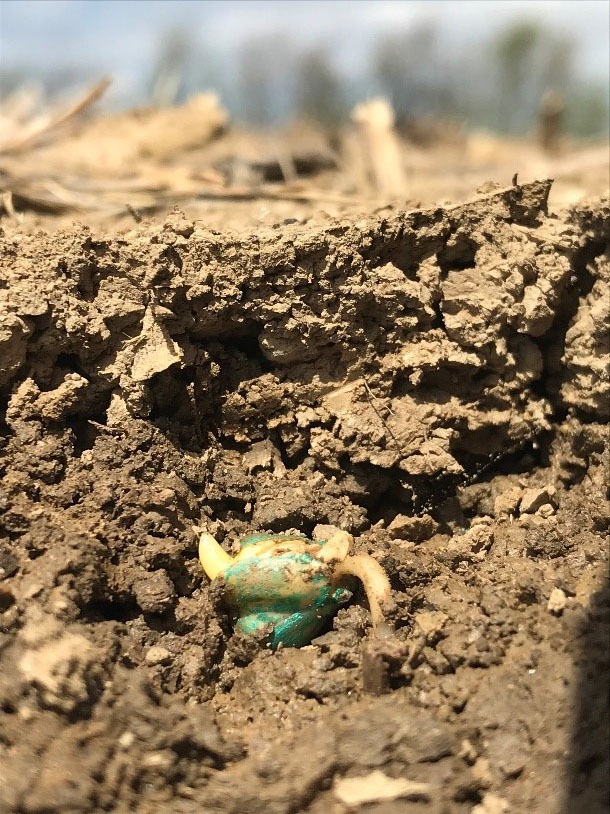
Planting for the remaining 5% to 10% of the crop is at standstill due to the previous wet days. Very little corn has emerged to date due to cool days and cold nights. Soil temperatures have remained low and have slowed the development of seedling emergence. The radical (root) has continued to develop and is 0.5 to 1 inch in length. The coleoptile (top sprout) has enlarged and is starting to elongate. Large amounts of rain in southern Ontario have caused the soils to firm up and seed beds to consolidate to create a dense soil pack above the seed. What was 2 inches of soil above the seed is now 1 to 1.5 inches of soil above the seed. Loose soil above the seed is now compacted.
Seeds have germinated but cell growth requires heat. Germinating seeds will need to be vigorous in order to push through the dense consolidated soil above it. Light rain showers should help keep the soil from hardening and allow seedlings to emerge. If dry weather comes in, growers will need to monitor the conditions and look at solutions to help the seed emerge. Potentially breaking the crust with aid of a rotary hoe or planter coulters or vertical till units set shallow to just crack the soil surface above the seed. This will take the pressure off and allow a pathway for the coleoptile to emerge and prevent the breakage of the coleoptile as it’s pushing. If conditions cause the coleoptiles to break, the plumule, which is the tissue just below the coleoptile, will be released and will form leaves which is known as “leafing out underground”. It’s best that the plumule gets exposed above the surface in order to establish a plant. The goal in the next week is to have the corn crop emerge and establish a uniform stand.
Soybeans
Soybean planting has been at a stand still this past week. Acres reported are in the 10% to 40% planted. Planted soybeans will need to be watched for crusting concerns as soybeans need to push the cotyledons (seed) out. Watch for thickening of the hypoctyl (area from the seed to the radical (root)), as the hypoctyl thickens, the more effort the plant is using to push the crust up. Crusting can be more of a concern with soybeans and actions maybe needed if crust develops. Scout fields and check crusts until your stand has been established. Act when necessary.
May 15, 2020
The polar vortex arrived this past week as forecasted, bringing cold temperatures and snow. With no heat accumulation, the crops have been at a standstill this week with many people wondering what damage has occurred. Two dry days saw the continuation of planting in areas that had seen limited planting previously. Rain on Thursday prompted a shutdown of planting for a while as wet rainy conditions will be with us over the next week. Forecasted warm weather will help bring plants out of the ground and shoot the wheat taller as crop development will take a quick jump in the next two weeks.
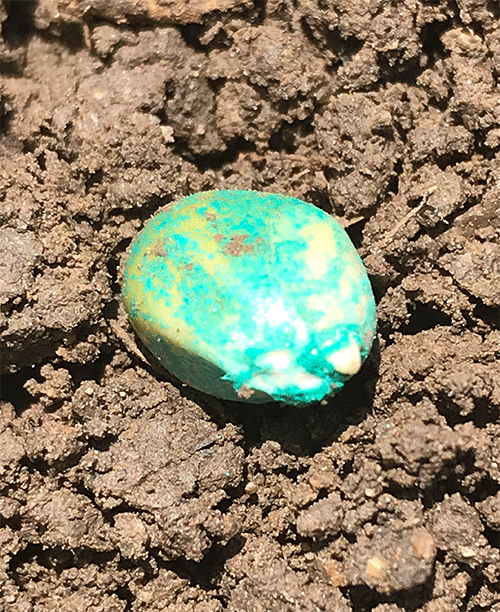
Corn
The majority of the province’s corn has been planted with a few more acres still to be planted in areas that had limited planting progress due to wetter soil conditions. Provincially, corn acres are in the 90% planted range with many farmers completed for the first time. As soil conditions have been cool, very limited corn emergence has occurred to date. Many are concerned about the potential need to replant if seed has been damaged by the cold temperatures. If leafing out has occurred underground, it will prevent proper emergence and stand establishment.
Soybeans
Soybean planting has continued where conditions have allowed. Snow and rain have slowed planting progress in many areas, but a few dry days in the southwest provided one to two planting days this week for many farmers. Soybean planted acres are estimated to be around 30% as a provincial total. Farmers in many areas have yet to start planting while farmers in other areas are well over half done.
Winter Wheat
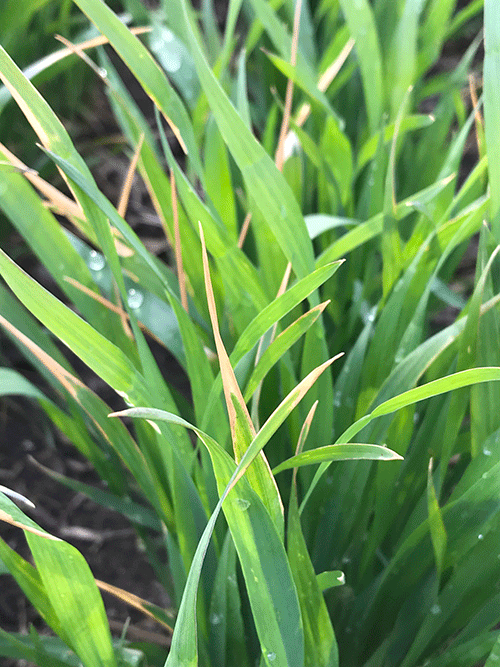
Cold temperatures have been making it hard for wheat farmers to manage their crop this season. Between cold nights, frost, snow, and periods of warm intense sunshine, conditions have been right to injure the crop. A thinner cuticle on the leaf has made the plant more susceptible to damage from nitrogen or herbicide applications when the sun comes out. To date, most of this has been cosmetic injury with burning of leaf tissue as the flag leaf has not emerged yet. Still, the timing of herbicide and nitrogen applications have been a challenge for most farmers as warm and wet conditions in the next week will push growth development quickly as well as weed growth. Wet conditions will make it hard for farmers on clay ground to apply herbicide without compacting and rutting up their fields.
Frost this past week has raised concerns of damage occurring to the winter wheat crop. In many southern locations, temperatures were at -3° C for three hours. Two days later, it has been observed that the leaf margins have some browning and some purpling on the leaf; this is slight leaf damage. No damage has been noted to the growing point and leaf damage appears to be very minor. With reports to the north indicating temperatures at -7° C, much more damage can be expected; but it depends on the crop growth stage as the crop can take cold temperatures when in the tiller or early GS30 as it is not as far along in maturity as further south. After a few days, assessments will need to be done to ensure the crop has recovered from the heavy frosts.
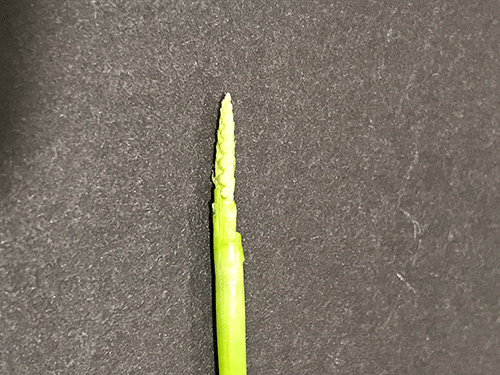
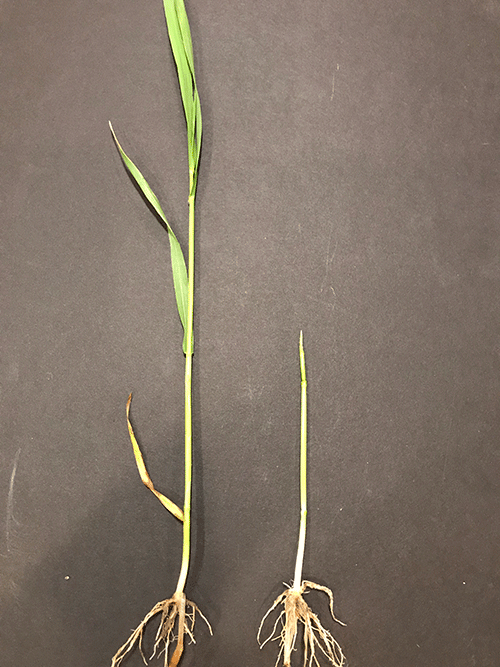
For more crop updates across the province check out Field Crop News. https://fieldcropnews.com/
May 8, 2020
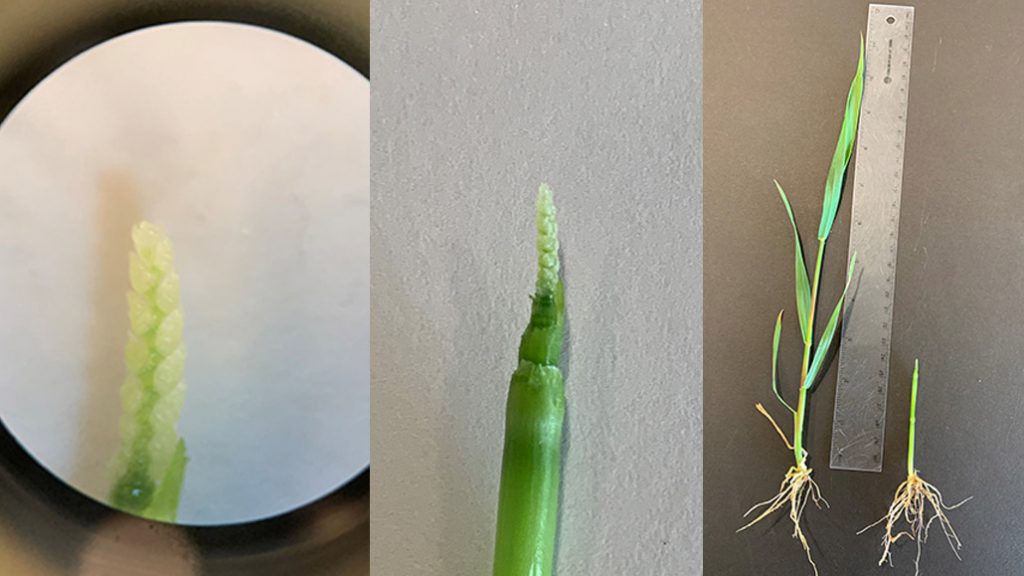
It’s been a drier week for the province with warm and cold cycles. Talk of a polar vortex this Friday and Saturday will bring frost concerns across the province. Below normal temperatures have kept plant growth development at a slow pace in the wheat crop (the below photos show wheat at GS32). Lots of corn has been planted where ground conditions have allowed. Frost this weekend may have an impact.
Weeds
A warm burst of heat on Sunday has brought the winter annual weeds to bolting and flowering. Annual weeds have also emerged – lambsquarter has been found with one to two leaves already visible in fields. Fleabane is growing rapidly in fields and will need control before it gets too large.
Corn
Cooler soil temperature this spring is delaying corn emergence. Corn seed in the soil will be maintaining good seed integrity as modern seed treatments have been designed to help protect the seed from early season diseases and soil insect pressure. Corn seeding for some farmers has wrapped up for the season while some pockets of the province are waiting for soil conditions to improve. Planted acres in the province are most likely in the 75% range with some areas 100% complete and other areas at 0%.
Soybean
Some soybean acres have been planted in the province with estimates in the 10% range. Most farmers are waiting for warmer conditions. The next two weeks will see the bulk of the crop planted.
Winter Wheat
The heat on Sunday has pushed the growth of the winter wheat crop a bit further along and the stem elongation is starting in most fields. One or two nodes should be noticeable, and most fields are in the GS31 to GS32 growth stage. Frost this weekend has many farmers concerned for their wheat crop. Since damage impact is a factor of crop stage, temperature, and duration, make sure to measure all three. Check your crops growth stage and walk your fields. Check frost prone areas (low lying areas) for any signs of damage. Damage to the seed head will not be noticeable until head emergence, but knowing what growth stage you were at during the time of the frost, and how long temperatures were below freezing, will help confirm if the frost was the cause. Usually yield impact occurs in winter wheat past the GS37 stage (flag leaf emerging) and temperatures below -4° C for more than two hours. Since the majority of the crop is at an earlier growth stage, we don’t anticipate widespread frost damage, damage is projected to be limited.
Spring Cereals
Be sure to check out the GrainTALK webinar with Joanna Follings on Spring Cereal management.
May 1, 2020
Spring planting had a nice little start in April. Most of the spring cereals are now planted which is ideal to help position the crop for best potential. Corn has started to be planted across the province with reports of 5% to more than 30% planted in some areas. Few soybean acres have been planted at this time.
Winter Wheat
The majority of winter wheat has had nitrogen applied. The early applications of nitrogen on wheat has allowed the wheat green up and tiller out nicely. There is still the odd field that needs nitrogen as it’s showing light green to yellowing; delays may have been due to wet fields. As wheat is at the 30 to 32 growth stage, it is about to start elongating as the stem elongation pushes the crop upward. Timing for early disease control and weed management is now, where needed. Timing for growth regulators in fields with possible lodging concerns are best at the 30 to 32 growth stage. With the warmer temperatures coming this week, we will see rapid development of the crop. Cool weather this April has led to slow growth which has helped tiller development.
Spring Cereals
The majority of the spring cereals have been planted with reports of 90% complete. Large volumes of oats, barley, and spring cereal has seen an increase in acres this year with the favourable planting condition and market prospects. Locking in marketing opportunities now would be wise.
Corn
This past week has seen a nice start to corn planting, with up to 30% of the acres planted in areas such as Huron County. Farmers are off to a good start with very nice planting conditions, they are the best soil conditions that have been seen for some time. Planting into fit soil means preventing sidewall compaction in the seed trench and preventing rooting issues for the corn plant later in the season. Better root development, better plant nutrient uptake, and less stress on the plant. Planting right is the start of a good crop. The soaking rains on Wednesday has slowed the progress, but with a forecast of warmer and drier conditions over the next week, planters will hopefully be back out in the field soon.
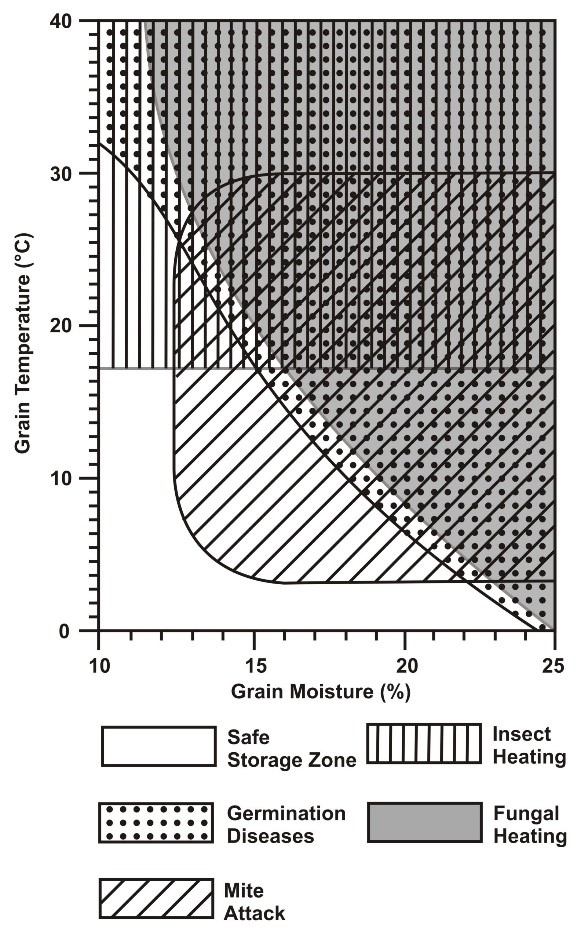
Soybeans
Planting is slowly starting on soybeans as the focus has been planting corn in fit field conditions. With the corn planting well under way, soybean planting will be following in the coming weeks. With a nice start in April, 2020 planting is looking better than 2019.
Grain Storage
With the reduction of corn processing, some corn farmers may be faced with extended grain storage on farm this year. An article by OMAFRA’s engineering specialist, James Dyck, highlights the key factors that farmers need to take to insure longevity of the grain.
Consider the temperature your grain will be stored at and the moisture level it needs to be to prevent fungal and insect damage to the grain. Most importantly – keep it cool and dry.
Check out field crop news for more details. https://fieldcropnews.com/2020/04/storing-grain-safely-into-summer-and-beyond/
For more Field Crop News, check out the April 30, 2020 OMAFRA Field Crop Report. https://fieldcropnews.com/2020/04/omafra-field-crop-report-april-30-2020/
March 27, 2020
Spring has started in Ontario, with winter wheat greening up and some frost seeded spring grains being planted. As well, some drier fields have seen grain drills with some early spring grains being seeded. Harvest 2019 should be wrapping up any time now.
There has been some talk of early nitrogen (N) being applied on winter wheat already. It’s a bit early, but for those late planted fields that need some help tillering this spring, putting a first shot of N on early at green up will help plants tiller and improve yield potential. A later N application will be needed to help finish the crop. One big shot of N early is just wasting nutrients and not following 4R principals.
Fields planted early last fall tillered nicely before winter and are well established this spring. These fields do not need an early application, but can benefit from N application before they need it. The best timing is before the plants start to stem elongate; however, you also need to keep in mind that your application timing can be affected by when fields are dry enough to carry the equipment without causing field damage (rutting). It’s important to check the weather forecast and walk your fields to check the growth stage of the crop.
A delay in N application can result in the crop showing signs of deficiency. The yellowing of wheat due to a lack of N in the soil is a sign of crop stress. Early stress on the crop will cause fewer florets to develop which means fewer kernels and lower yield in the end.
It’s also important to note herbicide application needs to occur before stem elongation in order to prevent damage to plant and head development. Any stress just before and during stem elongation can cause damage to the developing head and reduce the yield potential. Scout early and scout often for plant growth, weeds, and diseases.
Marty Vermey is Grain Farmers of Ontario’s senior agronomist. •
March 19, 2020
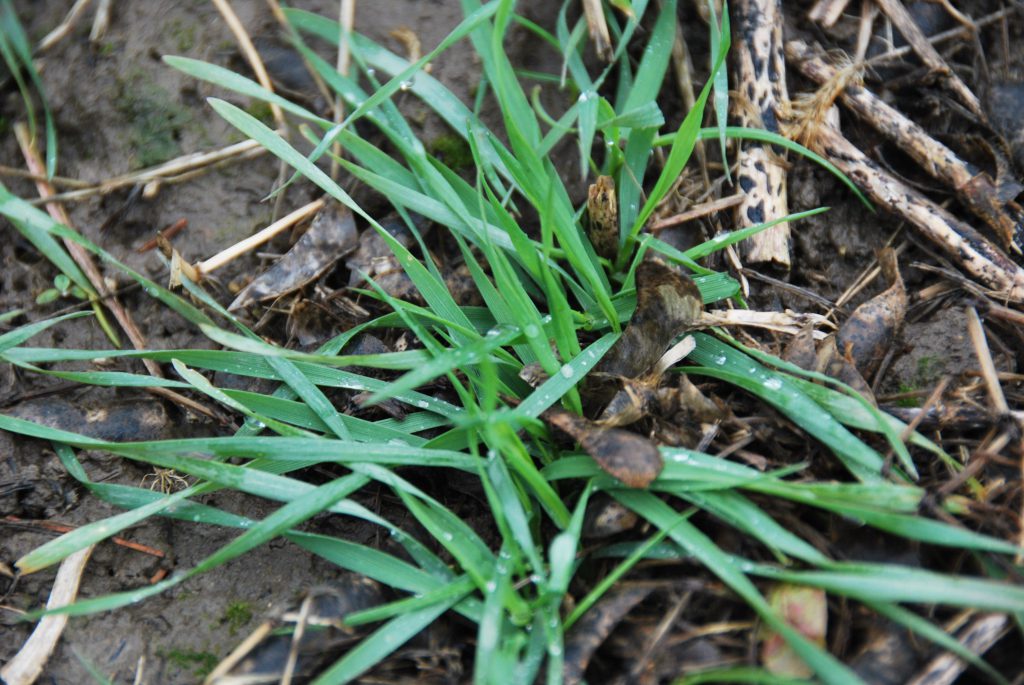
Update for March 2020 is looking favourable for the winter wheat crop. Warmer temperatures over the past 10 days have allowed the winter wheat crop to come out of dormancy in Southwestern Ontario. Fields greening up with little to no standing water on them over the winter have been a welcomed sight. Many growers have had the opportunity to under-seed fields with red clover this past week, with little to no mud or compaction.
As good weather continues, we hope to see a more typical spring with some of the early crops like spring grain, peas and sugar beets being planted over the next few weeks. •


